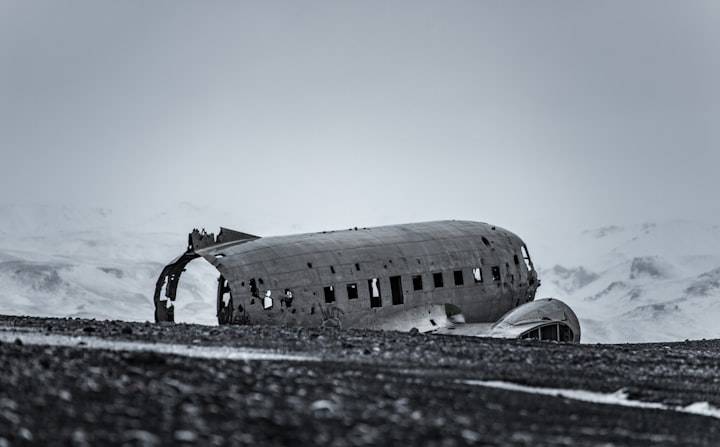On February 7th, 1981, a routine military flight ended in tragedy when a Tupolev Tu-104 jetliner crashed shortly after take-off from Pushkin military airfield near Leningrad. Onboard were 50 people, including 16 admirals and generals of the Soviet Pacific Fleet. The crash effectively decapitated the leadership of one of the most powerful fleets in the Soviet Navy.
The Tu-104, piloted by Lt. Colonel Anatoly Inyushin, was transporting the Pacific Fleet command back to their headquarters in Vladivostok following an annual leadership meeting in Leningrad. By all accounts, it was an ordinary winter day with light snow and a slight crosswind—nothing out of the ordinary. The take-off initially proceeded normally, but just 8 seconds after becoming airborne, the plane crashed violently to the ground, killing all on board.
The explosion and resulting inferno left no survivors. The blaze raged for over an hour, making rescue attempts impossible. Only one badly injured crew member was found, having been ejected from the shattered cockpit. He later died en route to the hospital.
A Devastating Loss
The death toll from this single crash was staggering. In total, 44 naval personnel perished, including Pacific Fleet Commander Admiral Emil Spiridonov. Among the dead were 12 captains and 16 admirals and generals—an unprecedented loss of high-ranking officers.
To put this in perspective, during the entirety of World War II, the Soviet Union lost only 4 admirals. Yet here, in a matter of seconds, 16 were lost. For the Soviet Navy, it was a devastating blow—one that initially led them to believe they were under attack.
Sabotage or Accident?
In the immediate aftermath, the leading theory was that the crash was the result of an audacious enemy operation to sabotage the Pacific Fleet leadership. The military was put on high alert, anticipating a major offensive.
However, as no attack materialized, attention turned to the possibility of an internal saboteur. Suspicion fell on Vice Admiral Rudolf Golosov, who was Admiral Spiridonov's second-in-command. Golosov had inexplicably declined to join the fatal flight at the last minute. Could he have known about a plot to kill his superior officers?
As it turned out, Golosov had a valid reason for his absence. He had received approval from Spiridonov to visit family and took a commercial flight instead. However, the theory of internal sabotage persisted for some time before being dismissed.
If it wasn't the enemy or a betrayer from within, that left the likelihood of a technical failure or human error. But the Soviet propaganda machine recoiled at the thought of flaws in Soviet technology or pilot mistakes.
The Aging Tu-104
After extensive investigation, the evidence pointed strongly to the Tu-104 itself as a major factor in the disaster.
The Tu-104 was the USSR's first jet airliner, rushed into production for political motivations. This haste led to major design flaws that were never fully addressed. While a remarkable aviation achievement, the Tu-104 had abysmal safety records, with accident rates far higher than any comparable Soviet plane.
By 1981, the Tu-104 was long obsolete. Civil aviation had already retired the model after a horrific 1979 crash that killed 94 people. Yet the military curiously continued using the accident-prone jets. The Tu-104 that crashed at Pushkin had outdated technology that differed little from the 1950s models.
Complicating matters further was the Tu-104's reputation as a very difficult aircraft to fly. Its safe operation depended heavily on an experienced, skilled flight crew.
Fortunately, Lt. Colonel Inyushin fit that description. He had over 17 years and 6000 hours of flight time in the Tu-104. By all accounts, he was a highly seasoned, competent pilot. Could he have made a mistake that led to disaster?
Overloading and Improper Cargo Distribution
Some clues emerged when it was revealed that Inyushin had previously filed complaints about the plane being overloaded with non-essential cargo on admiral's orders. This included the admiral's personal car parts and household appliances.
Witnesses also described a chaotic, disorderly loading process in which admirals recklessly demanded their purchases be crammed onboard. The cargo was apparently strewn about haphazardly, placing excessive weight towards the rear.
The flight recorder data aligned with this scenario. The Tu-104 became airborne well below the minimum safe take-off speed and at an unusually high angle of attack. The yokes showed no pilot input at the critical moment, indicating the plane essentially lifted itself in an unstable climb, then promptly stalled and crashed.
A similar effect could have occurred if improperly secured heavy cargo broke loose and shifted radically during acceleration. Some accounts suggest 500 kg paper rolls may have done just that, pushing the canter of gravity outside safe limits.
Pilot Helplessness
For Inyushin, once the plane was overloaded and unbalanced to this degree, there was little he could have done. Some pilots speculated he tried to lift off deliberately at higher speed to compensate, but the errant cargo load foiled his plan.
Refusing his superiors' reckless demands would have certainly ended Inyushin's career, if not worse. He seemingly accepted the excessive risk, hoping his skills could see them through. Ultimately, the danger proved too great.
The broader tragedy is that the Soviet system enabled and even encouraged such disregard for rules and safety by powerful officials. The cetacean Pacific Fleet commanders acted with impunity, facing no consequences for forcing the flight crew into an extremely hazardous situation.
The crash investigation was classified, avoiding any public accountability. The true causes only emerged years later, preventing similar future accidents. The Soviet bureaucracy proved unwilling to learn from failures if it meant exposing flaws among the leadership ranks.
Legacy of Secrecy
This blanket secrecy plagued the Soviet system for decades, allowing innumerable avoidable accidents to continue unchecked. The same wilful negligence by high-ranking officials appears evident in the 1996 crash of a military An-12 transport plane that killed a general and 16 others.
The commanders had overloaded the aircraft with their personal effects and construction materials for a general's home. Predictably, the plane crashed in poor weather conditions its passengers recklessly ordered it to fly through.
Ultimately, the Soviet rulers' disdain for safety and obsession with secrecy cost untold lives over the years. On that winter day in 1981, it snatched 44 Navy officers and 6 civilians through a preventable tragedy. The lessons from their loss became yet another victim of the culture that precipitated it.
Though a powerful military force, the Soviet system rotted from within, unable to confront hard truths and reform. The ordinary citizens paid the price as authorities constructed a facade of infallibility.
For those aboard the fated Tu-104, the system they served so loyally failed them—as it failed so many. Their silenced voices speak still to the perils of unchecked power and the human lives crushed beneath. We honour them by learning the lessons they were denied.


